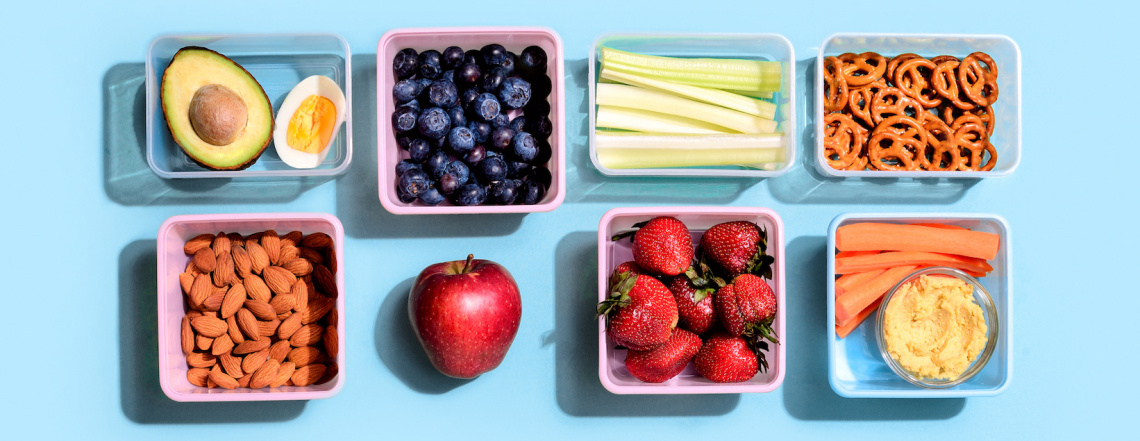Ever stood in front of the refrigerator looking for something to eat, but you’re not really hungry? Or watched television with a bag of crisps on your lap, only to reach down for more but they’re all gone? Same with the popcorn at the movies, or the snacks while you’re having a drink with your friends… Mindless eating is an eating behaviour where calories are consumed while we are unaware of the amount being eaten or that we are even eating in the first place. This is usually when we’re bored, tired, stressed, depressed, sad or even happy. Or sometimes it is because we don’t realise how much we’re eating.
- Read more about why we are mindless eaters and the health consequences in this article.
SOUP AND SCIENCE
The human stomach isn’t sensitive enough to register how much has been eaten until about 20 minutes after the food has been swallowed. So we rely on our eyes, ears and noses to tell us to stop eating, and we often overeat because of this.
One study had a number of participants eating out of a normal bowl of soup, while the other half were eating soup out of bowls that was refilled slowly from the bottom without the participants knowing - those people ate 70% more calories than the others but didn’t feel fuller - they estimated they ate the same as the people who ate from normal bowls because their bowls weren’t empty. This shows that we use visual clues to decide whether we’re hungry.
When we eat without thinking about it, calories can sneak in over the course of a day and we’ll be eating more calories than we burn without even realising it. This is when we pack on the pounds and develop deeply ingrained bad eating habits!
PRACTICAL WAYS TO HELP YOU STOP EATING MINDLESSLY
Mindfulness takes time, and we know that it might seem a little "woowoo" to some. But there are some super quick and easy, practical ways to tackle mindful eating, without the introspection (which you really should do).
There are many ways to minimise mindless eating if you find that this has become a problem…
Convenience = Consumption – ensure those carrots and celery sticks are cut up, ready to eat and at eye level in the fridge. Other options could be sliced up fruit, small pots of unsweetened yoghurt or hummus, small bags of unsalted nuts, hardboiled eggs and sliced chicken breast. Package healthy foods into small portions and have them readily available so that when you do stand in the front of the fridge, this is what you’ll see.
Everything in moderation – when you decide to watch a movie on the sofa, decant the crisps or popcorn into small bowls rather than sitting in front of the television with the whole bag on your lap – you’re just inviting yourself to gobble it all up.
Smaller plates and glasses – reduce portion sizes just by reducing the size of your plate. Big plates make your portions look smaller, so you’ll feel you need to fill up the plate rather than just serve what you need. You can reduce the food you eat by nearly 30% by using 24 cm (9.5 inch) plates rather than 32cm (12.5 inch) plates. Using long, thin glasses can reduce your drink (alcohol or calorific drinks) intake by about 50%, rather than using short, fat ones. Use the short, wide glasses for water instead.
Out of sight, out of mind – keep the tempting treats out of sight and keep the healthy and nutritious foods visible. Seeing food more often increases the chances that you’ll eat it. If you see a fizzy drink every time you open the fridge, you’ll think about it more often and will drink it more often too. And make the treats hard to reach…don’t make it easy to put your hand into the cookie jar!

It’s a mind game – you know that age old saying, eyes bigger than your stomach? Well it’s true. Research has shown that study participants ate almost 20% more when they were presented with 12 bowls of food as opposed to 3 bowls, even though the food was the same. Basically, limit the amount of food and options you have in front of you. The more there is, the more you’re likely to eat.
Fibre. Fibre. Fibre – High-fibre foods such as vegetables add volume in your stomach and help you to feel full. A good rule of thumb to follow is to fill at least half your plate with high fibre foods.
Hunger cues – the difference between physical and mental hunger is eating when you really feel hungry rather than because the clock tells you it is a mealtime. Researchers have found that people who lie within their ideal weight group are less reliant on the clock to determine whether it is time to eat. Be careful that you don’t trick yourself into snacking or consistent eating because you think you’re hungry.
- Read this article to understand the impact of mindful eating on your health
Although many of us are mindless eaters, we can train ourselves to know when we’re full by practicing some of the suggestions mentioned above. The most successful way of achieving this is by making moderate changes to our eating habits and the environment in which we eat.







Comments